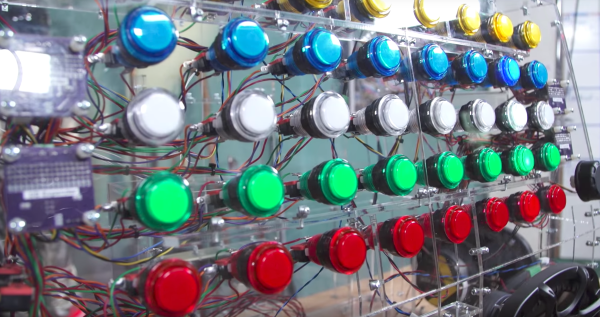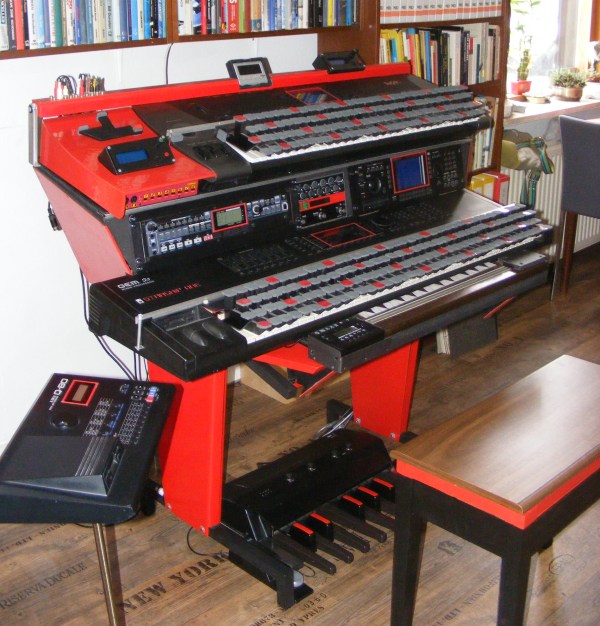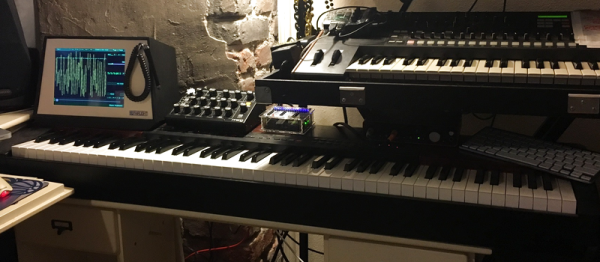[Ross Fish], [Darcy Neal], [Ben Davis], and [Paul Stoffregen] created “the Monolith”, an interactive synth sculpture designed to showcase capabilities of the Teensy 3.6 microcontroller.
The Monolith consists of a clear acrylic box covered in LED-lit arcade buttons. The forty buttons in front serve as an 8-step sequencer with five different voices, while touch sensors on the left and right panels serve as a polyphonic arpeggiator and preset controller, respectively.
 In order to control all of those buttons, the team designed breakout boards equipped with a port expander, 16-channel PWM driver chip, and N-channel MOSFETs allowing the entire synth to be controlled from a single Teensy 3.6.
In order to control all of those buttons, the team designed breakout boards equipped with a port expander, 16-channel PWM driver chip, and N-channel MOSFETs allowing the entire synth to be controlled from a single Teensy 3.6.
In terms of software, [Paul] made improvements to the Teensy Audio Library to accommodate the hardware, improving the way signal-controlled PWM waveforms are handled and enhancing the way envelopes work. Ultimately they combined three Arduino sketches into one to get the finished code.
After showing off the project on Tested, the team set up the Monolith in the Kickstarter booth at Maker Faire Bay Area. The project was a hit at the Faire, earning a coveted red ribbon and inspiring countless adults and kids to check it out. We love a project that inspires so much interaction. Not only can three people play with the Monolith at once, but they can see through the clear case and get an idea of what’s going on.
If you want to learn more you can download project files from [Paul]’s GitHub. In the meantime, check out some other synth projects we’ve published on Hackaday: we’ve grooved on a synth-violin, a 3D-printed synth, and a single-PCB synth, among many others.
Continue reading “The Monolith Brings The Boom To Maker Faire”

















